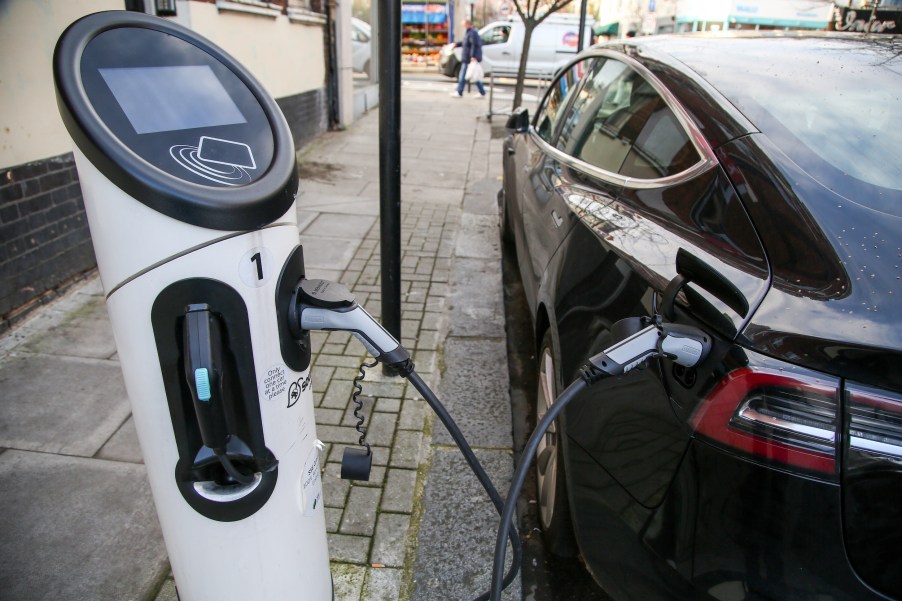
What Does Tesla Do With Old Batteries?
All EVs are powered by a battery instead of a traditional gas or diesel engine. While these batteries are definitely more efficient and environmentally friendly, they’re more difficult for automakers like Tesla to produce. Recycling these batteries is also an expensive process because they have to be smelted and have each material extracted.
Despite this, many automakers still go to great lengths to recycle old EV batteries. Nissan repurposes old batteries to power streetlights, while Hyundai is using these discarded batteries to create power for electrical grids. It should also be no surprise that Tesla fully supports recycling EV batteries, according to Argus Media.
Tesla’s recycling process
Tesla says that it recycles 60 percent of the components from its lithium-ion batteries once they’ve reached end of life. Typically, EV manufacturers put an eight-year warranty on these batteries, which accounts for around 100,000 miles. However, some Tesla cars have been reported with 400,000 miles on the odometer and minimal degradation on the battery.
According to this Medium article, 10 percent of these batteries can also be reused to build components of a new electric car, like the battery case. Tesla also has a special slab that can hold up to 1,000 pounds of batteries to be recycled. Having them all in one place allows them to be recycled quickly and easily.
The only material from these batteries that actually goes into a landfill is the modules. These parts are frozen, shredded, and crushed into harmless fluff that can’t contaminate the soil. Slurry blocks can be used for appliance painting, while copper cobalt gets sold to recycling centers.
The propylene glycol, used in the battery’s cooling tubes, also gets sold to local recycling centers. All the battery’s electronic components are removed and tested for functionality. Some of these electronics can be reused, but metals and wiring are usually sent to recycling facilities.
The importance of recycling
Unfortunately, the majority of dead lithium-ion batteries end up in a landfill or get stored for long periods of time. When batteries are left too close to a heat source for a long period of time, they can catch fire. Dumping these batteries into the soil can contaminate the earth and potentially surrounding bodies of water with harmful toxins.
Tesla is against dumping the batteries into landfills, and it works with a few different companies to ensure the cleanest recycling process. European Tesla locations partner with a mining company called Umicore. This company uses a “closed-loop” recycling strategy, which means the secondary materials can often be used for their original purpose.
Tesla’s other waste-mitigation efforts
Elon Musk says that Tesla EVs have stopped 4 million tons of CO2 gases from entering the atmosphere. Additionally, the company uses turbines and solar panels to extract the cleanest energy possible from the environment. Tesla doesn’t just recycle old battery parts: unused leather from building car seats has been sent to Apple to produce phone cases.
Tesla’s plans for the future
Cost definitely is a huge factor that contributes to the lack of recycled EV batteries. Tesla’s recycling partner, Toxco, charges $4.50 per pound of batteries. However, with the demand for EVs rising and increasing pressure on other automakers, recycling fees are down by 24 percent.
Tesla hopes that this downward trend will continue in the future, pushing it toward its goal of closed-loop recycling. Tesla also wants to set up an incentive program for customers who return their old battery modules.
Plans have been made for a Tesla battery-swapping station, which will hopefully encourage drivers to be more environmentally conscious. The automaker also plans to develop an EV battery that can be recycled many times, potentially lasting up to one million miles.



